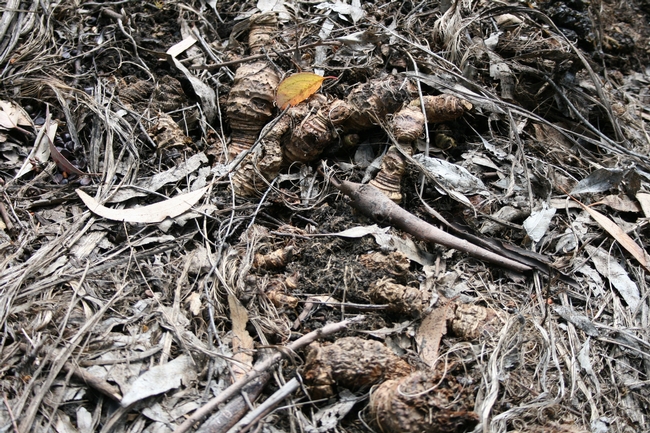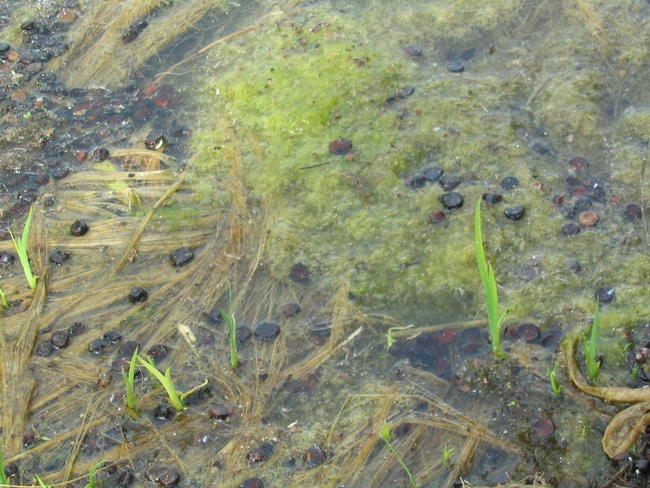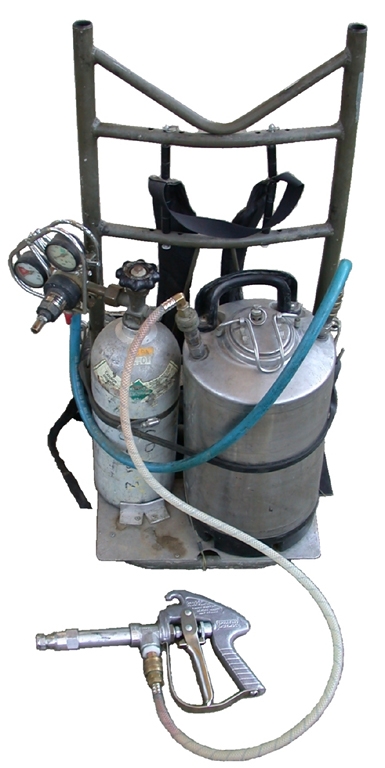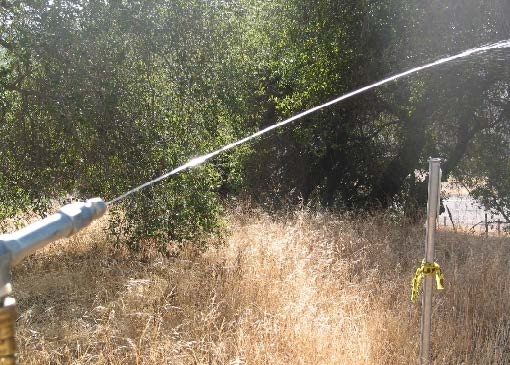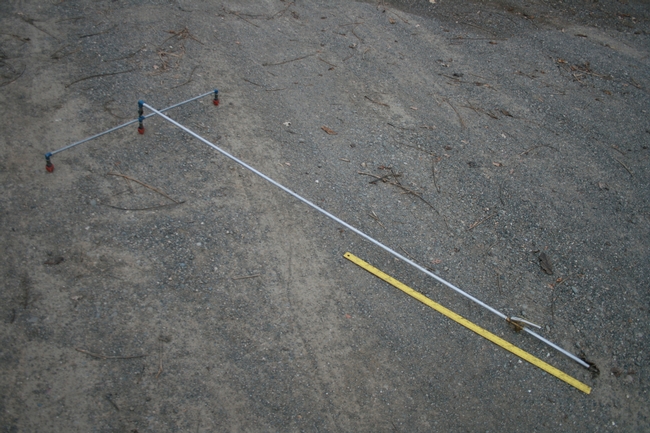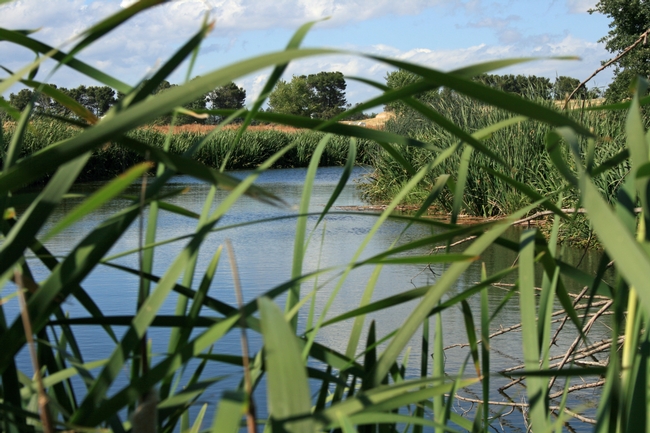
The drizzle application technique was developed at University of Hawaii for treating hard-to-reach invasive plants along forest trails. Low volumes (2 to 5 gpa) of concentrated herbicide solution are applied using a spray gun with a fine orifice disk. The spray gun puts out a thin stream of solution with a range of 20 ft. The operator waggles the gun to create a drizzle of spray droplets on the target. This technique allows directed treatment from a distance. The large droplets reduce drift, and the low volumes allow fewer tank refills, thus greater portability and savings in labor costs.
In 2008-2011 we did two trials at UC Davis comparing yellowflag iris control with shoreline drizzle applications vs. hand-held boom broadcast applications. Applications were made in September 2008 and September 2010, a time of year when iris is starting to senesce and send carbohydrates down to the roots.
The boom was a 5-ft boom with three 8004 nozzles, mounted on an extended 10-ft wand. Even with the long wand, we weren't able to reach the outer edge of the infestation without getting stuck in the mud.
Although we were concerned about getting adequate coverage with low-volume drizzle treatments, we were able to get nearly complete control of yellowflag iris. We used the aquatic-registered herbicides Rodeo (glyphosate) and Habitat (imazapyr). All treatments included 30% aquatic-labeled Competitor surfactant.
| Chemical | Rate, % product | Volume (gpa) | Iris % cover (SD) | |
| glyphosate | 20 | 5 | 3.7 (5.5) | |
| glyphosate | 20 | 10 | 3.7 (2.3) | |
| imazapyr | 10 | 5 | 1.3 (0.6) | |
| imazapyr | 10 | 10 | 1.0 (1.0) | |
| imazapyr | 20 | 2.5 | 0.7 (0.6) | |
| imazapyr | 20 | 5 | 1.7 (2.9) | |
| untreated | --- | --- | 100 |
|
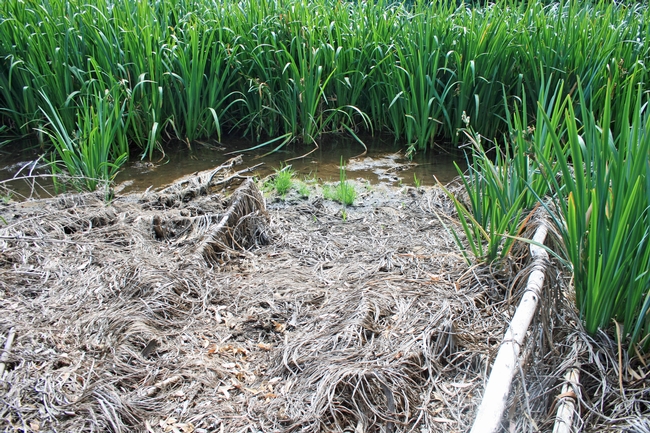
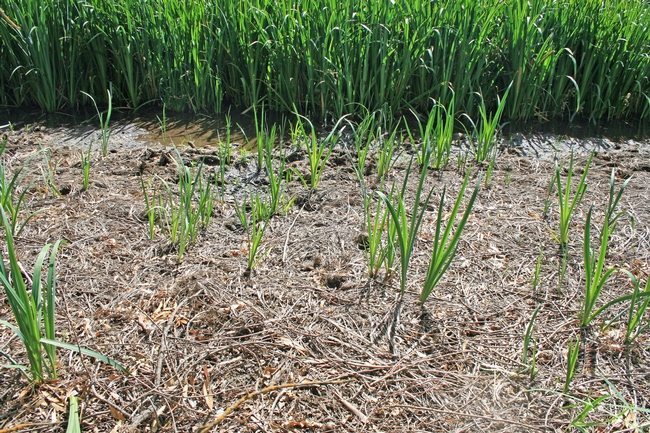
Drizzle application is a practical method for control of yellowflag iris. Imazapyr is most effective in this usage. These results suggest that drizzle applications are more adaptable than we had previously thought, and they may be an option in other large patch situations where broadcast treatments would normally be used.
